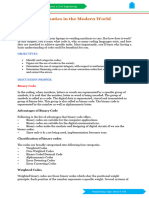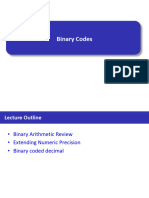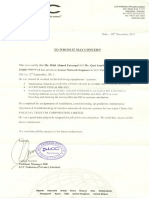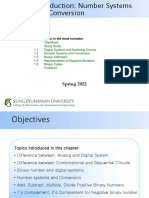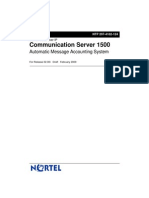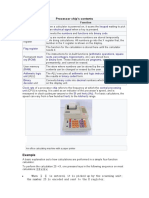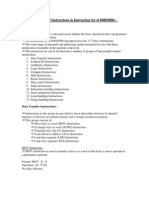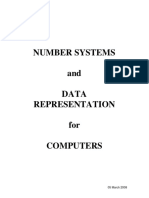0% found this document useful (0 votes)
298 views5 pagesLecture 5 Binary Codes
The document discusses different types of binary codes used to represent numeric and alphanumeric data:
- Weighted codes like BCD (8421 code) and non-weighted codes like excess-3 and Gray codes represent decimal numbers using binary digits.
- Alphanumeric codes like ASCII and EBCDIC represent both numbers and characters. ASCII uses 7-bit codes while EBCDIC is an 8-bit code.
- Error detection codes like parity bits can detect errors during data transmission. BCD is an example weighted code that represents each decimal digit with 4 binary bits in 8421 format.
Uploaded by
Bilal BilalCopyright
© © All Rights Reserved
We take content rights seriously. If you suspect this is your content, claim it here.
Available Formats
Download as DOCX, PDF, TXT or read online on Scribd
0% found this document useful (0 votes)
298 views5 pagesLecture 5 Binary Codes
The document discusses different types of binary codes used to represent numeric and alphanumeric data:
- Weighted codes like BCD (8421 code) and non-weighted codes like excess-3 and Gray codes represent decimal numbers using binary digits.
- Alphanumeric codes like ASCII and EBCDIC represent both numbers and characters. ASCII uses 7-bit codes while EBCDIC is an 8-bit code.
- Error detection codes like parity bits can detect errors during data transmission. BCD is an example weighted code that represents each decimal digit with 4 binary bits in 8421 format.
Uploaded by
Bilal BilalCopyright
© © All Rights Reserved
We take content rights seriously. If you suspect this is your content, claim it here.
Available Formats
Download as DOCX, PDF, TXT or read online on Scribd
/ 5
































